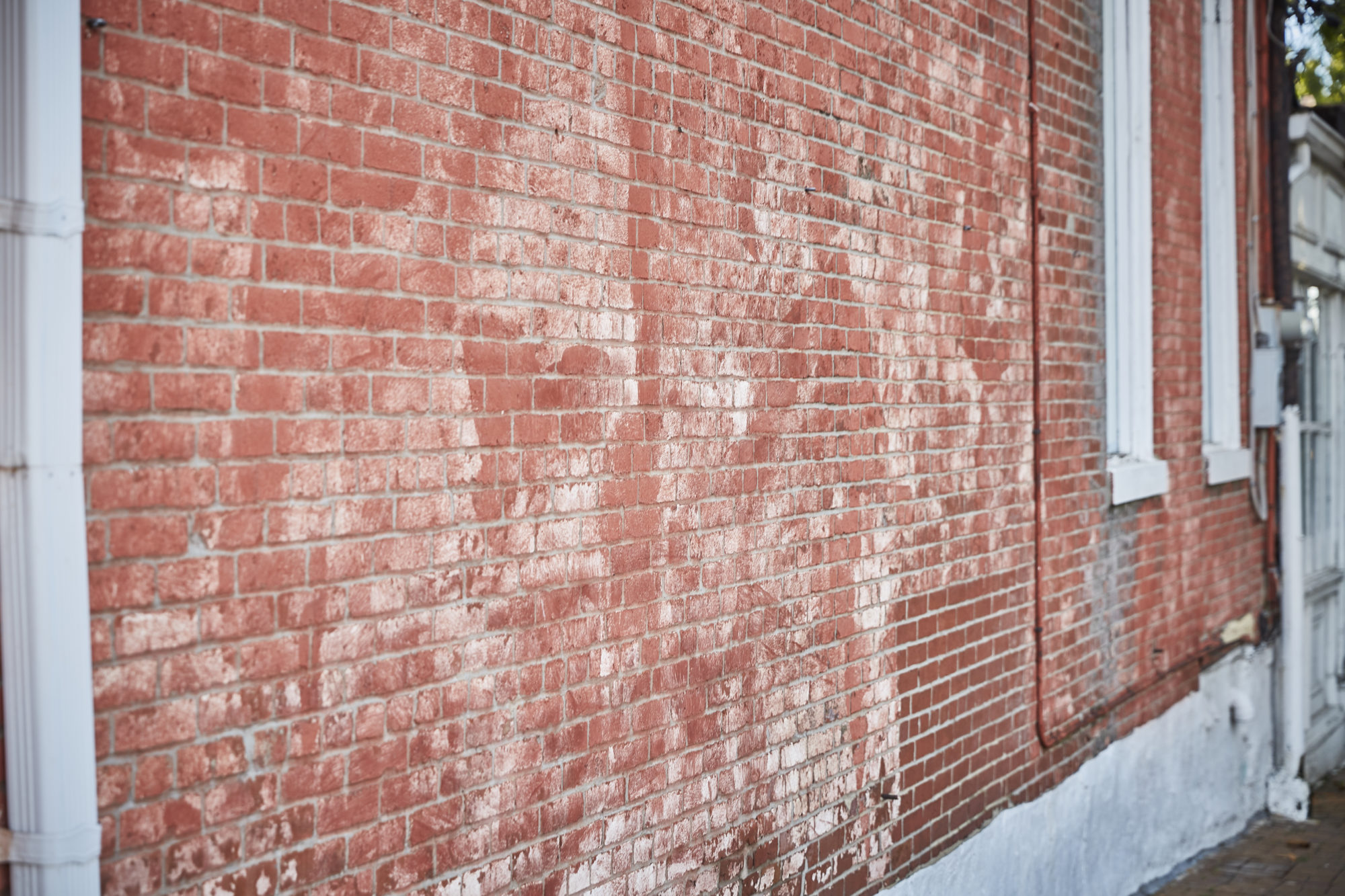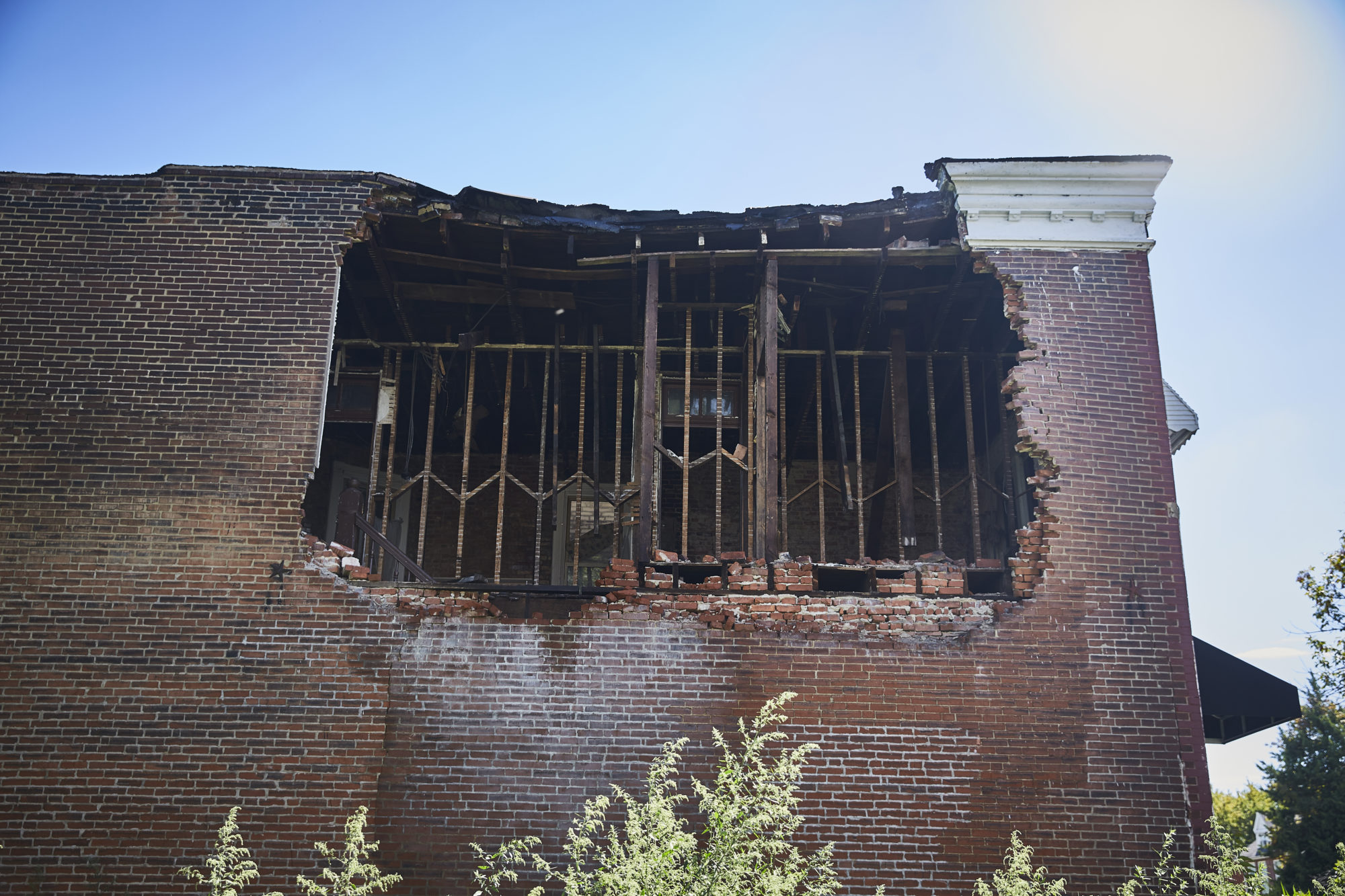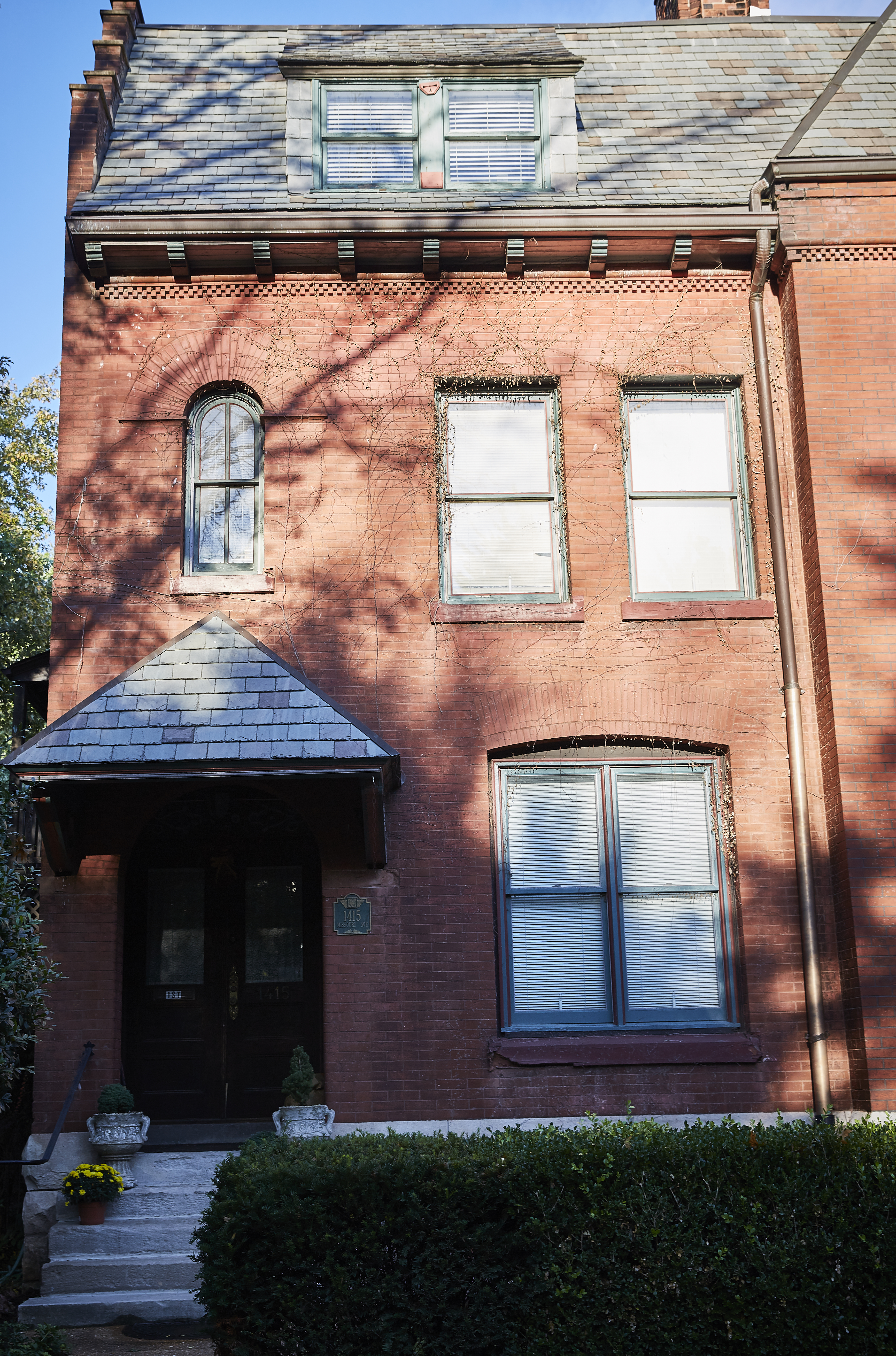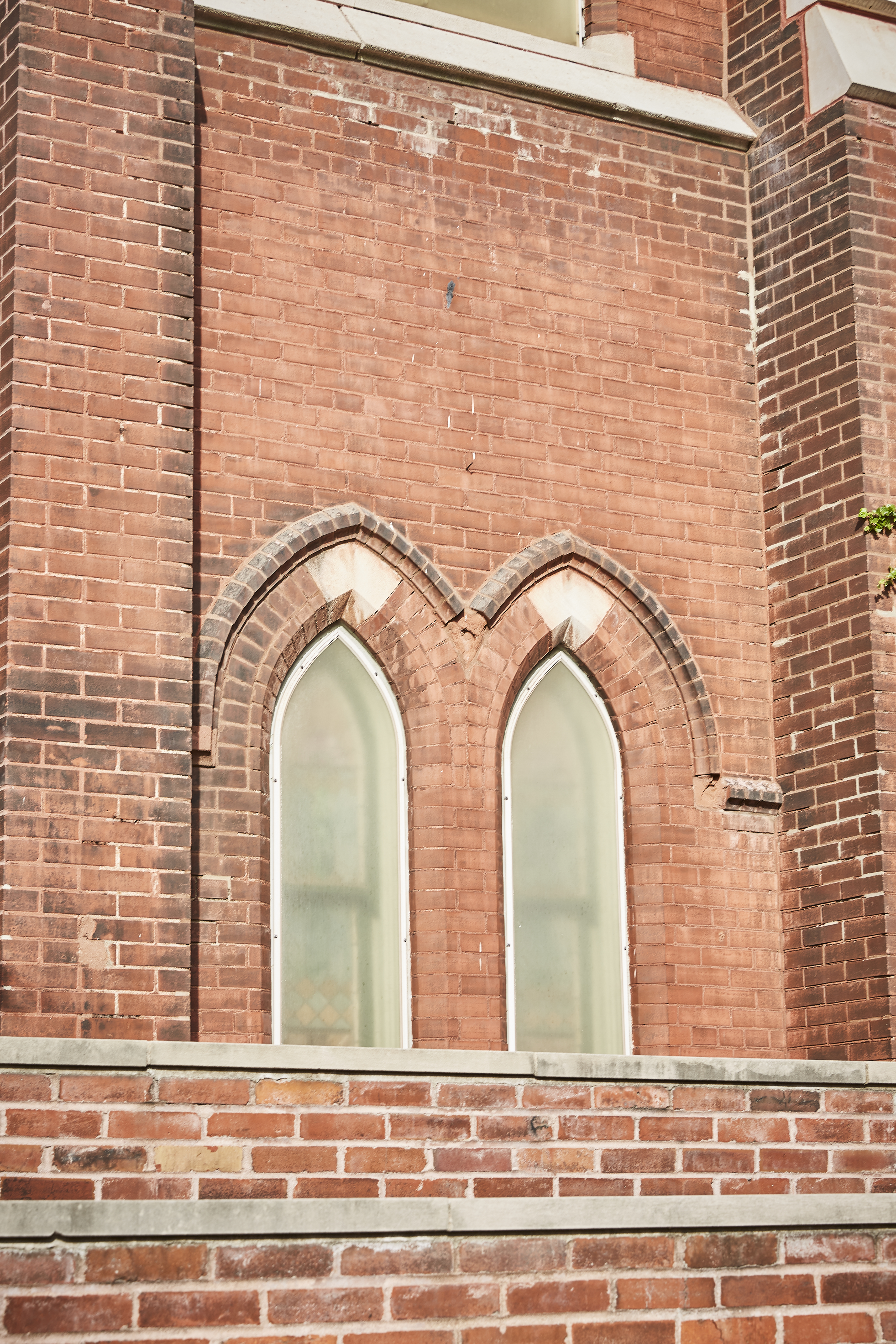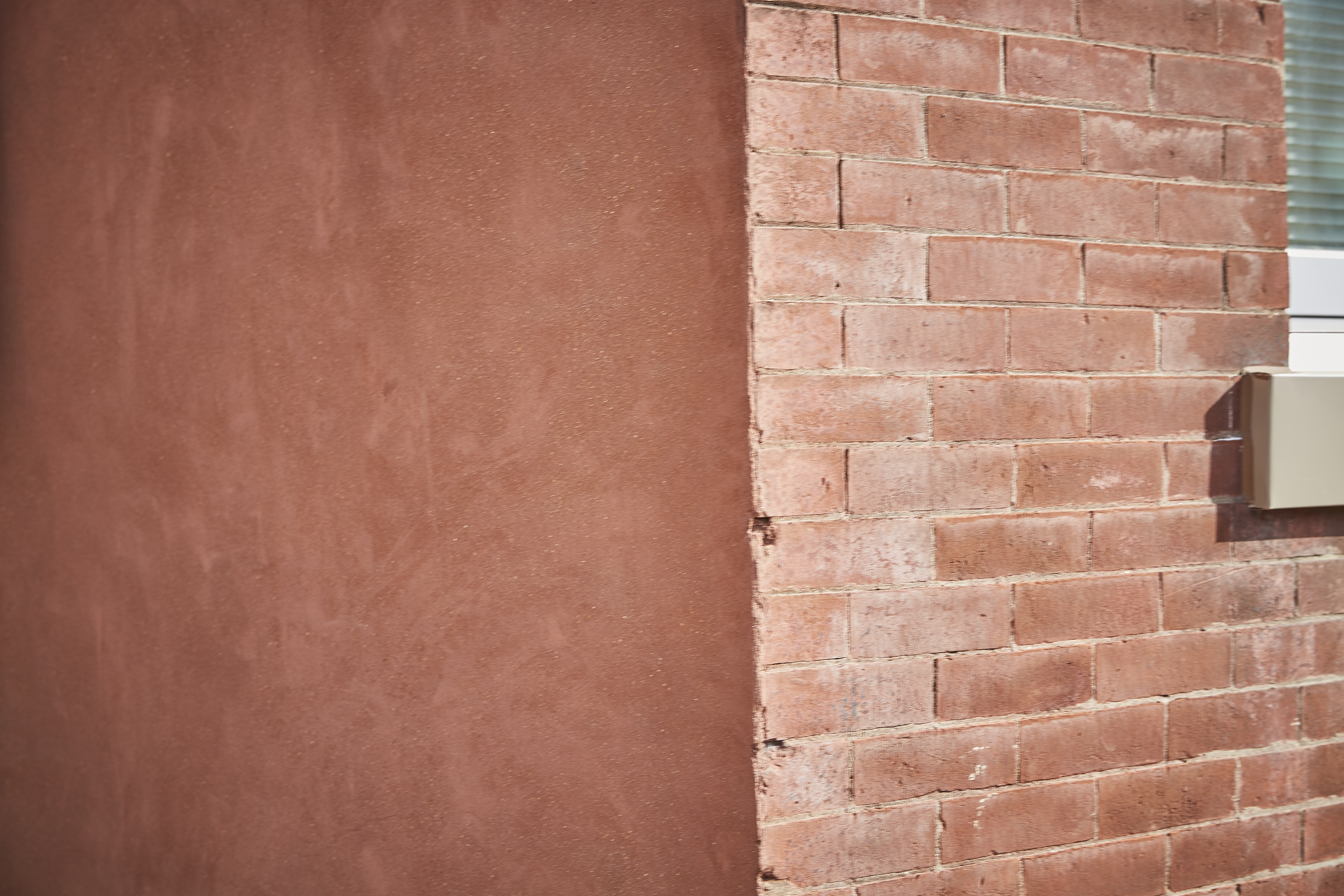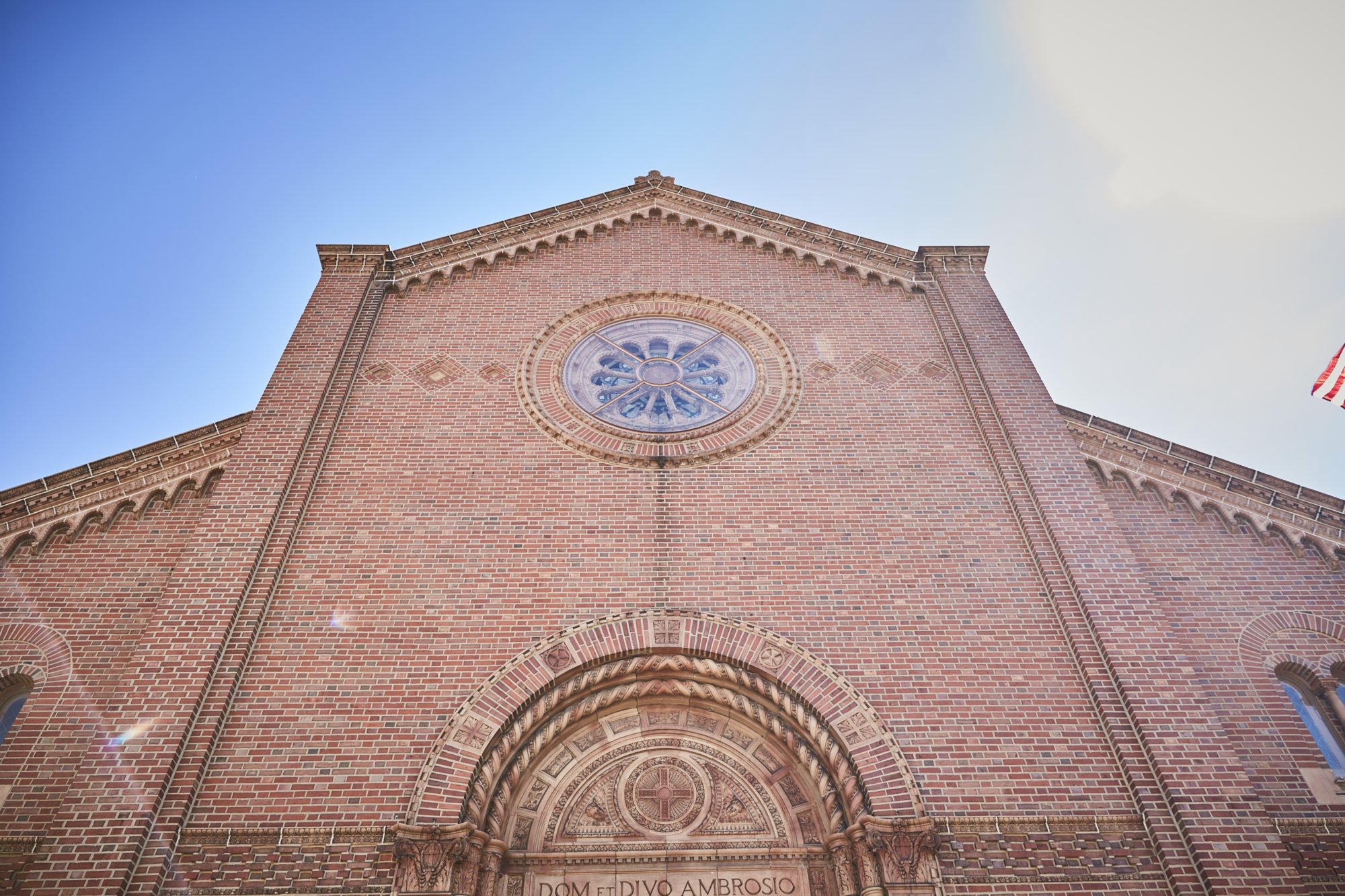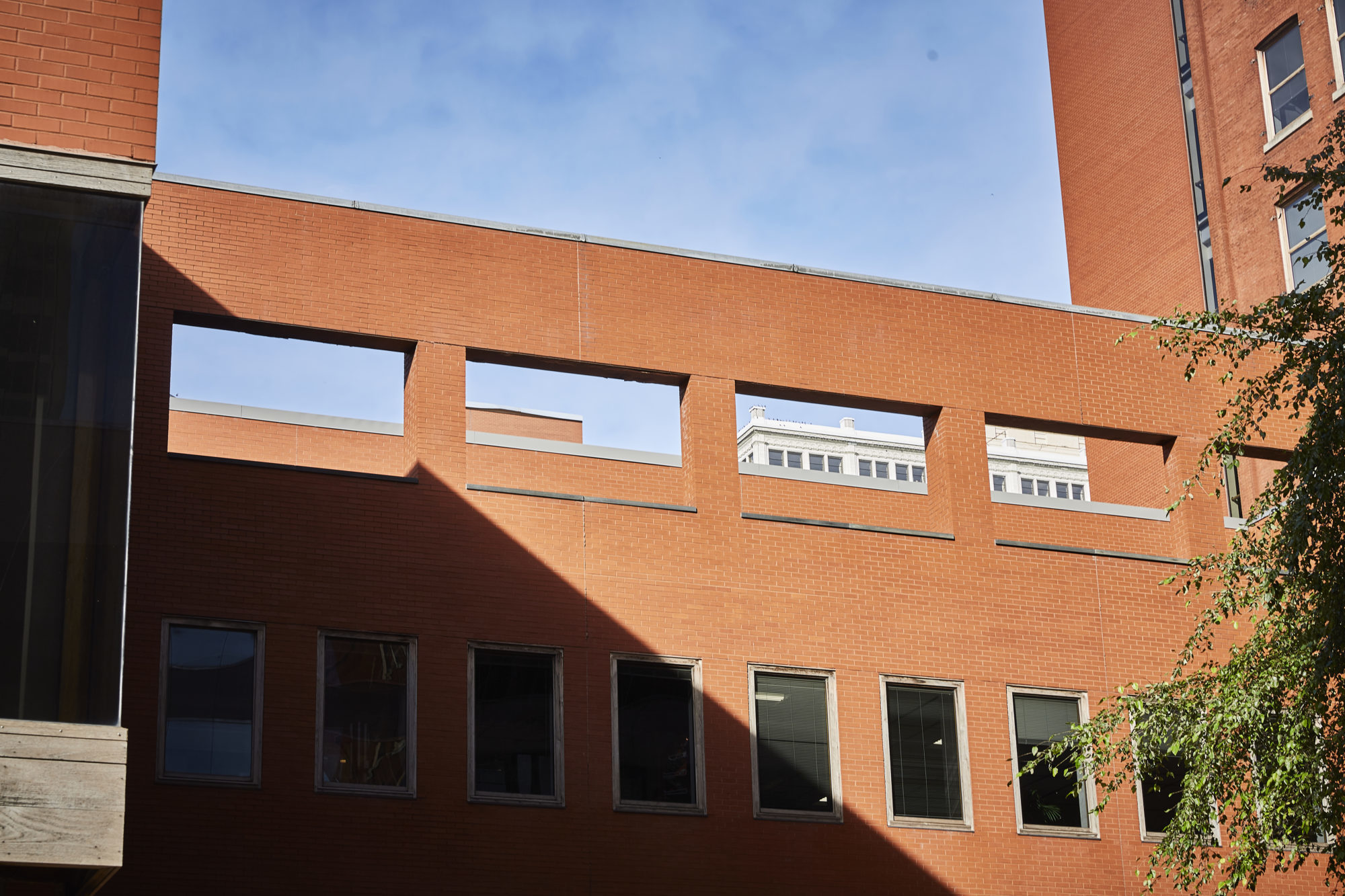St. Louis: Navigating the Brick City
Share:
The urban landscape can be seen as a transcription of a city’s history. In St. Louis, the construction and destruction of brick buildings reveal a racialized history of segregation and inequality. Within the textured body of a single brick lies the intersection of craft and utility. From its composition to its cultural significance in St. Louis’ development, brick takes on multiple layers of meaning. For the inhabitants of St. Louis, it can serve as a signifier of the ownership and value of space.
St. Louis became the “brick city” because of its geographical location. The richest clay deposits in the United States were found on the Eastern side of the state of Missouri. St. Louis was founded between two rivers: the Missouri and the Mississippi. The surface clay deposited by these rivers was typical of the Mississippi Valley and ideal for the construction of brick. Deeper beneath the surface clay, shale deposits offered a more durable and fire-resistant clay, ideal for kilns.1 This fine-grade clay and an abundance of accessible coal made it possible to mass-produce affordable, high-quality brick.
By the 1800s there were more than 53 clay mines scattered across the city. Clay was mined, molded, and fired on-site in various neighborhoods, and by midcentury the industry was essential to the economic and urban growth of the city. The clay was used to make sewer pipes, paving stones, and building brick. The domestic use of brick was encouraged by the fire of 1849, when much of the downtown area’s wooden-framed structures were destroyed, resulting in the required use of fire-resistant building materials. By 1900 St. Louis became the largest brick-making city in the world, shipping bricks across the United States and overseas.
The story of the brick’s construction is inseparable from St. Louis’ rich immigrant past. The unique craftsmanship and skilled masonry found in St. Louis structures represent the amalgamation of labor and technique from an influx of European immigrants and black Americans migrating to the urban north. The process of mining the clay—or “winning” it—molding and packing the clay, setting the bricks for the kiln, and firing them was extremely dangerous and physically demanding, especially before the technological advancement of steam power and the hydraulic pressing machine.
German, Italian, Irish, and black citizens entering the city met the skilled labor demands that made mass production of brick possible.2 The stratification of position within the brickyard reflected the racial, ethnic, and economic divides of the city over time. Before the Civil War and after it, black labor was used primarily to mine clay and make brick by hand. The skilled jobs were restricted to English or French citizens. A large wave of German immigrants, skilled in masonry and carpentry, entered St. Louis in the early 1800s to claim the skilled and supervisory positions in brickyards, such as bricklayer. Later, large waves of Irish and Italian immigrants migrated to St. Louis, and by the late 1800s they had taken on the lower-skilled positions, such as wielding hods to move stacks of bricks, which created competition for jobs with black citizens.
Brick and black St. Louisans have a complex historical relationship. Although the French, Italian, German, Irish, and black populations of St. Louis all had a major hand in the creation of the city’s brick identity, the ways in which black people are able to access that legacy are more complicated. Black citizens deserve their equal share of praise for the formation of the brick city, but they are repeatedly victims of the economics of that legacy. In St. Louis, brick acts as evidence that poor people, black people, and black spaces have not been valued historically and remain undervalued in St. Louis.
The French, German, Italian, and Irish ethnic communities were able to work, settle, construct, and retain space in ways that black communities were not. Because of the abundance and affordability of brick, all these populations created spaces for their communities that mixed the masonry styles of St. Louis with architectural influences from their home countries. The French developed in settlements such as Carondelet and Lafayette Square. Bakery brick, a white glazed variety, was popularly mixed with the standard red brick to make intricate patterns and designs in the flat-roofed dwellings of the St. Cecilia Historic District. The neighborhood was a French settlement dating back to the 1760s in the Carondelet area. Also notable are the terraced brick houses of Lafayette Square, designed in the distinctive Second Empire Victorian style. German immigrants settled into neighborhoods including Fox Park, where the St. Francis de Sales Oratory cathedral was built in the German Gothic style. The Irish community founded Dogtown, which had three major brick factories, in addition to clay and coal mines, and is known for its single and multifamily brick bungalows. The Italians developed the Hill neighborhood. The Hill sits on a clay mine that the Italian community used in building their homes, restaurants, and churches, such as the St. Ambrose Roman Catholic church. The structure, built in 1903 of terra cotta red brick in the Lombard Romanesque Revival style, still stands today. Although legal segregation has ceased in these historic neighborhoods, they have nonetheless maintained their cultural identities and architectural significance as unique contributions to the cityscape.3
Although the brick boom would not have been possible without their labor, black residents were not able to build and retain distinct community spaces as their ethnic-community peers did. Black clay miners and brick workers in St. Louis consisted of recently freed slaves migrating from the South. They were given the lowest-paying, most physically demanding work in the brickyards. Black communities developed in the spaces where they were permitted. After the NAACP mounted a successful court challenge to a 1916 segregation ordinance restricting potential property owners of a particular race to live only in neighborhoods that were 75% the same race, race-restricted deed covenants became the popular mode of keeping black residents out of white neighborhoods. These racially restricted covenants worked by compelling property owners to legally agree not to sell their property to anyone who was not white. This method successfully corralled black communities into limited spaces in the city, creating such neighborhoods as the Ville and Mill Creek Valley. Not until 1948, in the Shelley v. Kraemer Supreme Court case, were the covenants found unconstitutional.
The Ville and Mill Creek Valley both developed in the abandoned neighborhoods vacated by white inhabitants thanks to post-World War II urban sprawl and white flight into the suburbs. Regardless of whether the black communities were flourishing, black neighborhoods in St. Louis have been cyclically evacuated and destroyed. In 1954 Mayor Raymond Tucker proposed to destroy 5,600 homes and all commercial buildings in an urban renewal project subsidized by the Federal government’s National housing act of 1949 and the St. Louis bond issue of 1953. The putative reason behind this act was that Mill Creek Valley was a crime-filled and unlivable eye-sore.4Mill Creek Valley, a mix of commercial and residential properties that included middle class, working class, and poor black families, was evacuated and razed in 1959 by the city of St. Louis, displacing its former residents. The Pruitt-Igoe projects were demolished in the 1970s. Those 33 apartment buildings, built as a solution for the mass displacement of poor black citizens from areas including Mill Creek Valley, were infamous in the 1960s for poverty, crime, and continued racial segregation. Pruitt-Igoe is now synonymous with the failures of modern urban renewal and have been immortalized by the 2011 documentary The Pruitt-Igoe Myth.
Brick signifies spaces in St. Louis in ways that street signs and wrought iron gates cannot. It can reveal how cities such as St. Louis are built, and continue to develop internal and external boundaries. The racial, social, and economic histories of St. Louis are transcribed onto the brick, demarcating within these boundaries a history of access and rejection, investment and divestment. The investment in and quality of a structure’s upkeep can be the defining characteristic that labels space as hood or historic, safe or dangerous, dilapidated or full of character. These markers communicate to observers where they are, if they are safe, and how to conduct themselves.
Today there is a nationwide demand for high-quality brick with an aged and worn appearance. St. Louis brick is commonly shipped to larger cities such as Atlanta, Dallas, and Chicago. Demand has led to a plague of brick thievery in North City, a predominantly black area on the north side of St. Louis proper that includes several neighborhoods bordered by Delmar Boulevard to the south and Riverview Boulevard to the north.
Bricks are stolen through arson or by collapsing structural walls. In cases of arson, the high heat-resistance of the bricks leaves them without significant damage, allowing thieves to collect the bricks after the structure collapses. Another common method involves securing chains to fixed windows or door frames and pulling apart structures. In this more covert operation, walls can be pulled from the backs of abandoned buildings with little immediate evidence visible from the street. Once a wall comes down, the thieves collect the bricks and sell them. In an underregulated brick market, there is little to no accountability for the source.5 In 2007 the city government established measures to prevent brick theft that included raising the penalty to $500, 90 days in jail, or both.6 But with the price of historic bricks ranging from $2.50 to $25 apiece, a strong incentive remains.
The abandoned structures, stripped of their brick for profit, are left to fall into ruin, and any possibility of restoration is lost. The thievery left North City neighborhoods such as the Ville, Fairground, and the West End littered with dilapidated structures. The resulting decrease in resalable structures and overall property values led to divestment in these areas. Only rubble and piles of halved bricks as evidence of the neighborhoods and histories that once were. This type of destruction not only racializes space in St. Louis, it also marks the destruction of a community, not simply its structures. Not only are the homes left in ruins, schools, businesses, and recreational spaces fall into this state as well. The vacancy and dilapidation can have an isolating effect, contributing to inhabitants feeling either unseen or hyper-visible.
Contemporary artists are using art to further explore the material history of St. Louis. A Way, Away (Listen While I Say) was a collaborative public art project, commissioned by the Pulitzer Arts Foundation of St. Louis and the Sam Fox School of Design and Visual Arts, that explored the significance of brick reuse. Artists Amanda Williams and Andres Hernandez used brick to embody memory as the existence of something in the mind after the thing itself is physically gone. The project involved taking a condemned single-story brick building at 3721 Washington Boulevard and demolishing it. The demolition process came in three phases: subtracting, marking, and translating. Destruction was made ritual, and the building was given purposeful reverence as the brick was redistributed to different St. Louis community spaces.7 The project used a community of hands to take apart the old structure, piece by piece, and redistribute the wealth––not only through the utility of raw brick but also its beauty. The art project speaks to the creation of something new, and to reclaiming agency over old inscribed borders and boundaries in St. Louis.
In the short documentary Crossing the Delmar Divide, British journalist Franz Strasser explored the history of Delmar Boulevard in St. Louis, revealing a legacy of segregation, with income medians, education levels, and racial demographics differing drastically.8 The film highlights the contrasts in infrastructure on opposite sides of the street. Poverty, lack of city investment, and neglect are apparent on the north side, while well-kept brick buildings, new development, and maintained infrastructure are conspicuous on the other side. That stark difference between one neighborhood and another, between one side of the street and the other, marks a transition. In this cycle of abandonment, dilapidation, destruction, and displacement, black people are being doubly defined and forced to define themselves against the spaces where they dwell.
In 2017, at the Contemporary Art Museum St. Louis, curator Kelly Shindler presented an exhibition titled Urban Planning: Art and the City 1967–2017. The work of 24 artists explored issues of gentrification, post-industrialization, white flight, and the environmental effects of urban development in the United States. Although the exhibition featured artists working across several US urban spaces, two works stood out as St. Louis specific. Michael Rakowitz’s Dull Roar (2005) depicts the Pruitt-Igoe projects in an inflatable sculpture that periodically deflates then re-inflates. Viewers were provided with a wooden platform to watch the “destruction” and “rise” of the inflatable sculpture. The work evokes not only the cyclical destruction of housing spaces for the urban poor, it also mimics the apathetic ease in which these spaces are destroyed. Artist Abigail DeVille created a site-specific installation for the museum. Using recycled, second-hand, and discarded items collected from predominantly black areas in St. Louis, she made an immersive sculptural assemblage that reconstructs an imagined space in St. Louis. This use of dispersed fragments explores the constructed spaces of St. Louis to reassert the presence of black people there.9
St. Louis brick, thanks to its history and cultural significance, has legibility that St. Louisans can read in order to interpret and navigate the city. As a black man, I interpret this legibility in particular ways. These artworks have been essential as I reflect upon the effects of the built environment on my own black body. After the shooting of Michael Brown on August 9, 2014, I was forced to critically reflect on space and accessibility. Navigation is an essential skill when you are raised knowing that there are spaces where the safety of your body and spirit could be compromised. Brown was shot in Ferguson, Missouri, a space that I had once claimed and occupied. There are fatal consequences when navigating the urban landscape without the understanding that for some, the very presence of your body signals danger.
Brick, as it is broken down and manipulated, reveals its multiple layers, each inscribed with meaning. I am bound to St. Louis in intangible ways, bound to its landscape, as it has formed me and my ways of navigating the world. I am bound to its people. I am tied to Mike Brown. We were navigating the same streets in our black bodies. And as it is re-enforced that there are no safe spaces for black bodies, we are tasked in life and legacy with reforming urban space until there are.
This feature originally appeared in ART PAPERS “Borders, Barriers,” Fall 2018/2019.
TK Smith is a writer, researcher, and aspiring curator of American art. Currently, he is a Tina Dunkley Curatorial Fellow in American Art with the Clark Atlanta University Art Museum. His interests lie at the intersections of art, material, and race.
References
| ↑1 | Brick by Chance and Fortune: The Story of Brick in St. Louis, DVD, directed by Bill Streeter (St. Louis, MO: Hydraulic Pictures, 2011). |
|---|---|
| ↑2 | Saint Louis University, Brick by Brick: Building St. Louis and the Nation (St. Louis: Samuel Cupples House Saint Louis University, 2004). |
| ↑3, ↑5 | Brick by Chance or Fortune: The Story of Brick in St. Louis, DVD, directed by Bill Streeter (St. Louis, MO: Hydraulic Pictures, 2011). |
| ↑4 | Tim O’Neil, “A Look Back: Clearing of Mill Creek Valley Changed the Face of the City,” St. Louis Post-Dispatch, https://www.stltoday.com/news/local/a-look-back-clearing-of-mill-creek-valley-changed-the/article_04738cde-b0f8-5688-a20e-6fd86266d1ac.html |
| ↑6 | https://www.stlouis-mo.gov/internal-apps/legislative/upload/Ordinances/BOAPdf/67392×00.pdf |
| ↑7 | A Way, Away (Listen While I Say), Pulitzer Arts Foundation, https://www.awayaway.site |
| ↑8 | Franz Strasser, “Crossing the Delmar Divide,” BBC News, https://www.bbc.co.uk/news/av/magazine-17361995/crossing-a-st-louis-street-that-divides-communities |
| ↑9 | Urban Planning: Art and the City 1967–2017, CAMSTL.org, https://camstl.org/exhibitions/urban-planning-art-and-the-city-1967-2017 |
